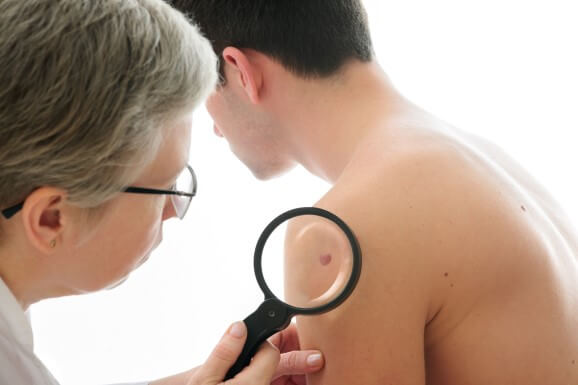In a skin biopsy, skin cells or samples are removed from the surface of the skin. These samples are used to diagnose or rule out certain conditions including skin cancer, various infections, psoriasis, warts and other skin disorders.
At Dermatology and Skin Cancer Center in Windermere, we offer skin biopsies in our office to help you get the results you need. Your skin is our top priority, and our focus is the prevention and early detection of a number of skin concerns. If you’re worried about any new or changing spots on your skin, contact Dermatology and Skin Cancer Center. We can work with you to determine if a biopsy is necessary.
Types of Biopsies
There are three kinds of biopsies – shave, punch and excision. In the shave biopsy, a razor-like tool is used to scrape the skin. The procedure leaves a small indented area, but stitches are usually not needed.
In a punch biopsy, a special circular blade is used to remove several deeper layers of skin for testing. Stitches may or may not be needed afterwards depending on the size of the wound, but we will bandage it to protect it from infection and prevent bleeding.
In an excisional biopsy, we will cut around an entire lump or patch of abnormal-looking skin, plus some surrounding normal skin. This type of biopsy does require stitches and a bandage.
Shave and punch biopsies typically takes about 15 minutes including preparation time, procedure, dressing the wound and post-care instructions. While excisional biopsies can take anywhere from 30 minutes to an hour, depend on the size of the lesion.
We will go through the entire procedure process in detail during your consultation making sure to answer any questions you may have. We will also provide any necessary instruction for post-treatment care. This can include at-home care of the skin or necessary follow-up visits.
What to Expect during and after Treatment
Depending on where the biopsy is taken, you may be asked to undress or put on a hospital gown. The area will then be cleaned and marked on the skin. Patients are given a local anesthetic to numb the area. This helps ensure that the biopsy process is comfortable, with minimal pain.
Biopsy wounds typically takes several weeks to two months to heal. Areas on the legs and feet tend to heal more slowly than do wounds on other parts of the body. All biopsies cause slight scarring, but they do fade gradually. We recommend avoiding strenuous activities while the wound is healing. Bumping or stretching the wound could cause bleeding, delay the healing process or lead to scarring.
The biopsy site should be cared for until the skin heals and/or the stitches are removed. Always wash your hands before touching the site, and then wash the site with soap and water (or shampoo if the wound is on the scalp). Then rinse the site and pat it dry with a clean towel. Then cover it with a fresh bandage that will allow the site to breathe. Following all post-care instructions is important to getting optimal results and minimal scarring.

